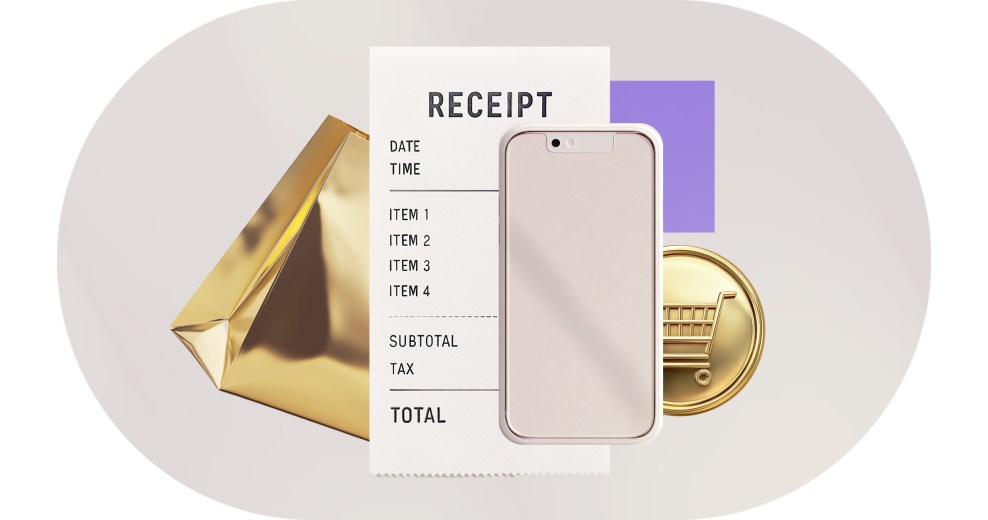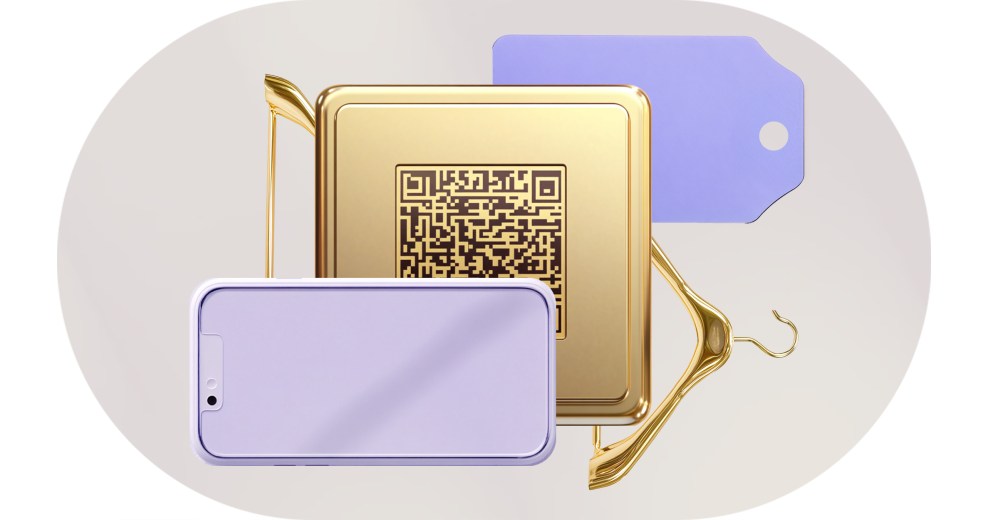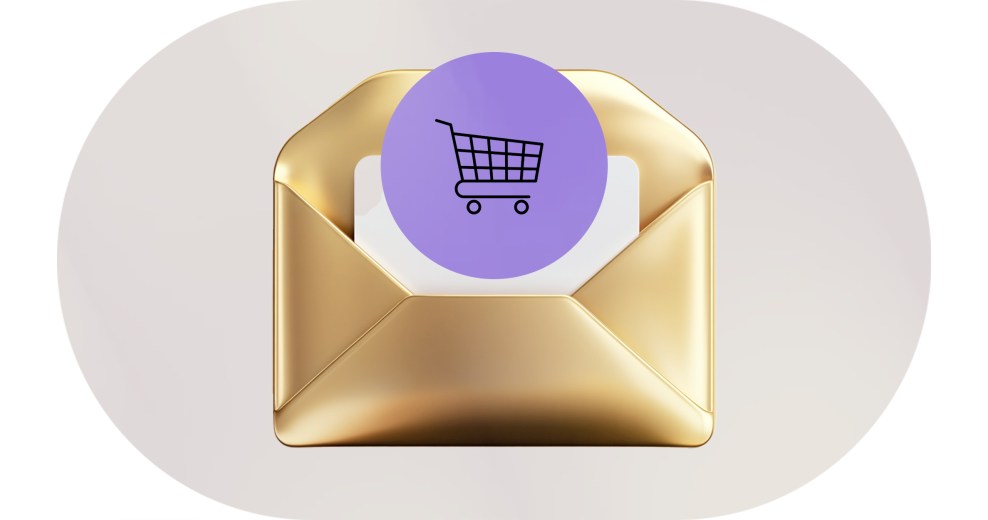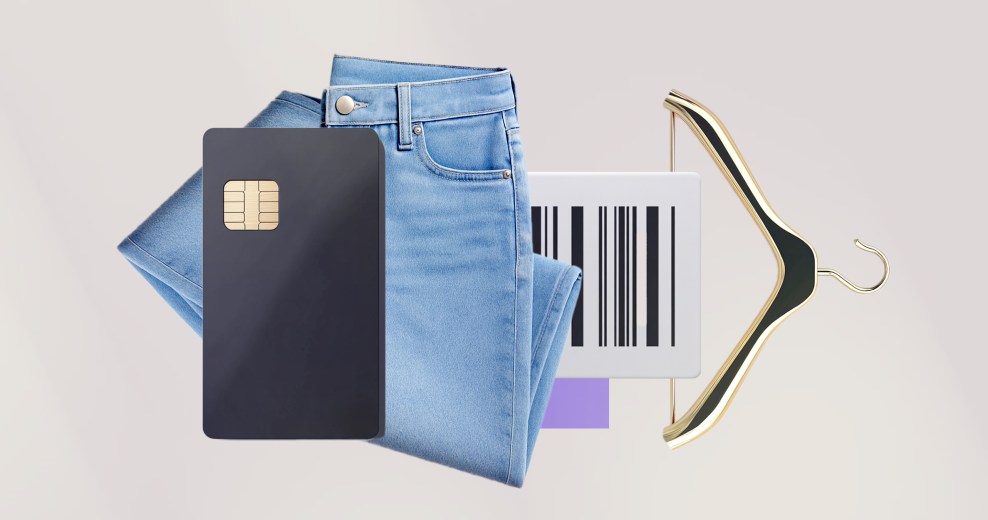This Unpacked guide, sponsored by Klaviyo, explores the ins and outs of B2C CRMs — how they offer something unique for B2C brands compared to legacy CRMs, the difficulties B2C companies face when retrofitting B2B CRMs and examples of brands that have achieved major success after switching.
While the initial iterations of customer relationship management systems transformed how businesses interacted with their customers, they were traditionally set up for B2B companies. This left B2C companies struggling to use tools designed for a different world, wondering what to do with features like lead pipelines and account management.
Because the way businesses sell to consumers has changed so much, B2C companies need CRMs that work differently than those built more traditionally. To ensure B2C businesses maximize revenue and customer trust, they’re exploring CRMs specifically built for them — B2C CRMs.
In this Unpacked explainer, we’ll dive into how B2C CRMs offer B2C companies what they’ve been missing from old-school CRMs, the challenges B2B CRMs pose, real-life examples of B2C brands using this new setup and how to put it all into practice.
Enterprise CRMs emerged to supplement sales team automation tools, adding functionalities for marketing and customer service. However, these remained focused on B2B, with long sales cycles and account-based strategies, leaving out B2C companies.
The biggest innovation in this space came in 1999, when Salesforce introduced the first cloud-based CRM. Previous CRMs required expensive licenses and access to on-site computers with LAN connectivity — cloud hosting enabled accessibility anywhere. While this was a major milestone, the data model remained the same, meaning B2C brands still had limitations, like needing to store more data than was possible.
More minor shifts followed, first based on how customers and business interactions had evolved by integrating with social channels for real-time relationship building, then incorporating AI for deeper insights and capabilities.
While there are hundreds of options at this point, B2C businesses still don’t have solutions fit for their needs. To get by, they cobble together tools to pair with B2B CRMs to solve business problems, while their B2B counterparts have sophisticated, tailored solutions.
“There are three big lessons B2C companies can take from the evolution of CRMs, especially in B2B, as they step into the era of B2C CRMs,” said Elcee Vargas, lead product marketing manager at Klaviyo. “Unifying systems leads to better insight and efficiency, real-time data should power every touchpoint and customer relationships start well before support tickets.”
B2B CRMs brought sales, marketing and service together in one place, giving teams a shared view of the customer and helping them move faster. B2C companies can do the same by consolidating disconnected tools into a single platform. A unified B2C CRM removes data silos to create a more consistent customer experience.
Many features are structured for the B2B sales cycle and don’t fit the fast-paced, transactional world of B2C, leading businesses to rely on separate platforms for email marketing, customer analytics and support. This leads to data silos, inefficiencies, frustrations and missed opportunities for personalization.
The amount of interactions (and data) B2C businesses have to track is magnitudes larger than B2B.
With these limitations, B2C companies have been forced to cobble together multiple systems to make something work for them. The average B2C brand uses more than 18 different tools to create a B2C CRM-like experience for their customers; however, if they could consolidate their tech stack, they’d save money, reduce technology management overhead and ensure there’s a central source of customer data truth.

“Some examples of the tools B2C companies pair with B2B CRMs include CDPs, like Segment or mParticle to unify and sync customer data, customer support tools like Zendesk or Gorgias for handling tickets,” Vargas said. “E-commerce data connectors like Tray.io, Zapier or custom APIs to pull in Shopify or Magento data, analytics platforms like Looker, Mixpanel or GA4 to track behavior and campaign performance, and email and SMS point solutions are other tools B2C companies use to try to make B2B CRMs fit their unique needs.”
An example of this scenario is Harney & Sons. The company struggled with siloed customer data spread across its CRM, email marketing and analytics tools. Upon launching an SMS channel, Harney & Sons wasn’t able to hit its target sign-ups and felt as though it was just offering big discounts to people already on its email lists if they signed up for SMS. The brand’s customer data was fragmented, posing challenges to the customer experience.
Even more established B2C brands have much to benefit from with a dedicated B2C CRM, like Harney & Sons. The company consolidated its retention tools with Klaviyo, centralizing loyalty and subscription automations, ensuring its subscriber list is always up to date. The brand’s new, consolidated retention stack saves time, making it easier to ramp up sophistication without glitches or developer support.
“Harney & Sons demonstrates how a centralized B2C CRM can fix fragmented experiences, boost re-engagement and help brands scale retention without extra complexity,” Vargas said.
Customer volume, sales cycle and data scale are some of the major differences between a B2B and a B2C CRM.
B2B companies handle thousands of business accounts with long, complex sales cycles versus B2C’s millions of customers and quick, transactional relationships. The lower volume, account-focused B2B CRMs aren’t able to serve the massive volume of individual customer data that B2C brands need.
Customer interactions, decision-making speed, communication channels and customer service models are other notable differences.
“In B2B, CRMs made structured data central to how teams prioritized and personalized outreach,” said Vargas. “B2C brands need that too, but at a much higher speed and scale. With tools like Klaviyo’s, B2C companies can act on customer behavior in real time. That means smarter targeting, better automation and more relevant experiences.
“B2B CRMs were built to manage long-term relationships from first touch to renewal,” she continued. “B2C brands also need tools that support the entire lifecycle, not just post-purchase moments. A modern B2C CRM brings marketing, analytics and service together to support customers from discovery to purchase to retention.”
B2B systems are sales-driven, high-touch and built for slower sales involving multiple stakeholders. They’re also meant for transactions primarily across email, Zoom and sales meetings. When it comes to handling support tickets, they’re generally dealing with low volume, complex resolutions with dedicated account managers.
On the other hand, B2C CRMs are automated, scalable and self-service to meet rapid, often immediate transactions, with interactions occurring across email, SMS, mobile, web, social media and in-store. Support tickets are high volume, but often simple to solve, such as returns or exchanges.
A B2C CRM is a customer relationship management system designed to help businesses manage their interactions with individual customers, unlike B2B CRMs that manage business-to-business relationships. A well-designed B2C CRM centralizes customer data so businesses can more easily communicate with people and create personalized experiences throughout the entire customer lifecycle.
Brands and retailers can gain a deep and actionable understanding of their customers’ preferences, behaviors and purchase history. This setup enables personalized marketing campaigns across various channels, improves customer service and boosts sales more easily and effectively.
For example, a B2C CRM that centralizes purchase history and online behavioral data can trigger automated cross-selling emails based on products viewed in an online store.

No. This is one of the common myths surrounding B2C CRMs. These are not email-only platforms, but point tools like loyalty apps, CX dashboards or B2B CRMs with consumer add-ons.
An email-only platform is a lightweight solution designed for managing and executing email marketing campaigns without offering the broader data and functionality found in a full-featured B2C CRM. A B2C CRM is more strategic and data-driven, designed to orchestrate personalized customer journeys across channels and lifecycle stages — critical for brands relying on deep customer insights to drive loyalty and revenue.
Point tools are standalone or modular platforms that solve specific customer engagement or data challenges, such as tracking loyalty rewards, collecting customer feedback or visualizing NPS trends. They’re often used alongside other systems but aren’t built to manage the entire customer lifecycle on their own.
In contrast, a B2C CRM unifies data and engagement across all stages and touchpoints, enabling holistic customer strategies and advanced personalization. When point tools feed into B2C CRMs, their intelligence is enhanced without creating data fragmentation, generating a more powerful setup.
Vargas shares some examples of customers whose setups echoed these multi-tool setups before discovering a dedicated B2C CRM.
“Happy Wax’s setup didn’t work because they used separate tools for email, SMS and reviews,” she said. “None of the tools shared data well, so they couldn’t personalize effectively or see how one channel impacted another. SMS pricing also didn’t flex with their seasonal business. A dedicated B2C CRM like Klaviyo’s combined all their data and messaging in one place. That allows them to personalize across channels, track performance clearly and cut costs by using one system instead of many.
“Another example is from Ministry of Supply,” Vargas continued. “They relied on Shopify’s default account pages, which were basic, off-brand and required customers to leave the shopping experience to access their account. The experience felt disconnected and didn’t support personalization or reduce support volume. With Klaviyo’s platform, they created a branded, seamless account experience where customers could now track orders, see personalized recommendations and access purchase history without leaving the page. It led to over 650 self-serve support interactions in under four months and fewer support escalations.”
Customer engagement and retention are ever-increasingly high priorities, especially for B2C businesses, and a CRM tailored for B2C companies is specifically designed to handle customer communication at scale.
“If you’re hesitant to change, that’s understandable,” said Vargas. “Most current setups only work for so long — they often require a lot of manual work, have data gaps and make it hard to act quickly. A B2C CRM isn’t just a new tool but a way to simplify how B2C brands work. It puts all your data and channels in one place so you can personalize and automate without relying on multiple disconnected systems. You don’t have to switch everything at once — start small — but if you want to grow faster and understand your customers better, this is the smarter, more scalable way to do it.”
On top of the appeal of streamlining tech stacks, customer acquisition costs have increased greatly, especially for B2C brands. A 2022 study from SimplicityDX found that CAC has risen by 222% over the last decade due to a variety of factors that affect virtually all brands, like the introduction of iOS 14.5, the decline of third-party cookies and legislation such as GDPR.
For these companies to maintain growth, it’s imperative to investigate ways to reduce such costs and identify potential improvements that can enhance customer experiences for better retention and long-term loyalty.
And as more and more consumer-focused brands continue emerging, competition will only increase. Consumer expectations are accelerating faster than brand capabilities can keep up. Aside from climbing CAC, shrinking budgets and AI raising the bar for personalized experiences make it challenging for B2C brands to keep up. B2C brands need to focus on engaging their existing customers, retaining them and refining their processes to survive in the modern age — adopting a B2C CRM will make a drastic difference in their workflows, helping them achieve these goals.
Other motivators for a more efficient CRM setup include 41% of B2C marketing leaders saying their biggest challenge is personalizing their communications and interactions — something expected by 74% of consumers in 2025. Additionally, 1 in 5 buyers stop buying from a brand after a single negative experience, putting pressure on brands to consistently deliver.
Some of the high-level benefits of B2C CRMs that will help brands and retailers meet consumers’ quickly shifting expectations and keep up or stay ahead of competitors include consolidating tech stacks, centralizing customer interactions, enhancing the customer experience, driving sales growth and creating valuable customer insights.
Helen of Troy, for example, saved 40% on total cost of ownership and eliminated hundreds of IT tickets per year by consolidating its tech stack with Klaviyo. Men’s streetwear brand Jordan Craig centralized and activated its data in Klaviyo’s platform for a 54% year-over-year growth in revenue from email in the first six months, with 30% of that revenue coming from automations.
“Businesses can personalize at scale and drive smarter, faster growth with built-in data, flexible workflows and a vast partner ecosystem provided by B2C CRMs,” Vargas said. “Our purpose-built CRM for B2C makes it easy to unify marketing, service, analytics and data in one easy-to-use platform. Teams can focus on results rather than complexity with real-time insights, AI-powered recommendations and automated attribution.”

B2C CRMs offer a much more personalized experience, with integrated self-service capabilities that can help reduce support ticket volume, dynamic product recommendations powered by unified profiles and more.
“With a B2C CRM, product discovery is personalized,” Vargas said. “Instead of generic ‘you might like this’ suggestions, customers see recommendations based on what they’ve browsed, purchased or abandoned. This can happen directly in the email they receive, on their account page or even as they shop because the CRM is pulling from unified data in real-time. It feels helpful, relevant and timely, not random.”
Outreach is personalized, as is any cross-channel marketing. For example, with a B2C CRM, customers experience personalized outreach, timely updates, product discovery, fast service and more — the experience customers expect, demand and reward. So, communication across email, SMS, mobile app and WhatsApp will be unique, and consumers will receive messages on their preferred channels, as the CRM will record those preferences.
“One example would be an abandoned cart situation where a customer adds items to their cart but leaves,” said Vargas. “They get a generic email two days later, but no SMS follow-up, no retargeting. They forget about the purchase. With a B2C CRM, the platform sees the abandoned cart in real-time, notices the customer usually responds to SMS and sends a personalized text within an hour. If there’s no response, the customer is automatically retargeted on social with the same product and a reminder. The follow-up is fast, relevant and on the right channel.”
On the flip side, without a B2C CRM, the consumer experience likely consists of fragmented communication, late shipping updates, communications via the incorrect channel, repeated support tickets and more.
“A post-purchase example using a traditional/legacy setup is a customer receiving a plain order confirmation after buying a product, nothing else,” Vargas said. “When they want to return an item, they have to email support. A week later, they get a promo email for the same product they just returned. Another is when a customer abandons their cart and has both email and SMS profiles, but only ever clicks on SMS. Without a B2C CRM, the brand’s follow-up is sent through email by default. The message gets buried or ignored, and the sale is lost.
“When using a B2C CRM, after purchase, the customer sees a branded customer hub showing order status, personalized product recommendations and one-click returns,” she continued. “Based on the product they bought, they get a follow-up message suggesting a complementary item. Everything feels seamless and tailored.”
CRMs built exclusively for B2C companies are crucial as the market has changed dramatically, often requiring more from these brands to win their customers’ wallets. This can be even more difficult for DTC brands, or those that began as exclusively DTC and have since worked to establish some retail presence.
The customer journey and value proposition were much simpler at the time of Dollar Shave Club’s founding in 2011. However, after its acquisition, the brand knew customer centricity and personalization were even more important. Personalization efforts worked well but were time- and resource-heavy. The brand had already been using Klaviyo for other services, so turning on the CRM functionality was a simple click, with RFM (recency, frequency and monetary values) reporting an out-of-the-box feature.
After using Klaviyo’s B2C CRM for a few months, the brand reduced cancellations by one-third and increased AOV for account holders by 12%.
Another DTC brand that has since expanded and found success with a dedicated B2C CRM is Daily Harvest. A decade after first coming on the scene, Daily Harvest was still working with a custom site, a custom reviews platform and an SaaS solution for email marketing, resulting in high costs as it scaled — and an inability to move quickly.
By consolidating all its reviews and marketing into one system, the brand reduced its e-commerce-related developer hours by more than 15% and its e-commerce tech costs by 18%. Additionally, the switch unlocked operational efficiencies, including automations and segmentations that save time and personalize the customer experience.
In less than a year, Daily Harvest built 67 segments and counting, noting how easy it is to segment customers on an expanded set of traits, from their preferred flavors to their stage in the subscription journey. The brand continues leaning into Klaviyo’s connectivity with Shopify data to make processes faster.
“The key takeaway is that no matter where you are in your growth, your tech stack needs to evolve with your customer and the speed of modern retail,” Vargas said. “These brands didn’t just switch tools, they moved to a system that could support personalization, speed and scale in one place. For example, Dollar Shave Club shows that even brands with strong name recognition still need deeper personalization to reduce churn and grow LTV. Daily Harvest proves that hanging onto custom setups can slow you down and cost more.
“Consolidation isn’t just cleaner, it unlocks speed and flexibility. All these brands learned it’s not just about managing campaigns in silos but managing the entire customer relationship.”

Overall, a B2C CRM needs to house all consumer data into profiles for a brand, allow them to leverage that data for personalization at scale without needing developers, have AI built in to make personalization more actionable for marketers — and to make marketers more efficient given economic uncertainty — and connect marketing and customer service into a single platform to deliver on the full customer experience.
The top features to look for when evaluating prospective B2C CRMs are customer data and segmentation, marketing automation and multichannel messaging, customer service and ticket resolution, artificial intelligence, marketing and customer service analytics and integrations.
After identifying B2C CRMs with the ideal features, it’s essential to ask the following questions to round out their evaluation.
- Do we have a full picture of our customer across all channels and touchpoints, or is our data scattered across tools and hard to act on?
- Can our team easily use the data we have without relying on developers? Or, are we constantly stuck waiting on technical help to make changes or build segments?
- Can we act on customer behavior in real-time, or do we miss key moments because our system is slow or disconnected?
- Can we personalize engagement at scale, across email, SMS and other channels?
- Can you have marketing, analytics, customer data and service in one platform?
The final step is to ensure a good fit. Vargas offers suggestions on questions to ask to determine this.
“Can you unify customer, order and behavioral data in one place?” she said. “How flexible is your platform for marketing and service use cases?”
CRMs have long served B2B brands, overlooking B2C’s more unique requirements. When B2C brands and retailers have a CRM built specifically for their everyday needs, they have more visibility into their customers’ data — preferences, activities, etc. — to provide the personalized, seamless experiences consumers expect. By streamlining their tech stacks, B2C brands can lower customer acquisition costs, increase loyalty and achieve long-term success.
About Klaviyo
Klaviyo (NYSE: KVYO) is the only CRM built for B2C brands. Powered by its built-in data platform and AI insights, Klaviyo combines marketing automation, analytics and customer service into one unified solution, making it easy for businesses to know their customers and grow faster. Klaviyo (CLAY-vee-oh) helps relationship-driven brands like Mattel, Glossier, Core Power Yoga, Daily Harvest and 167,000+ others deliver 1:1 experiences at scale, improve efficiency and drive revenue.





